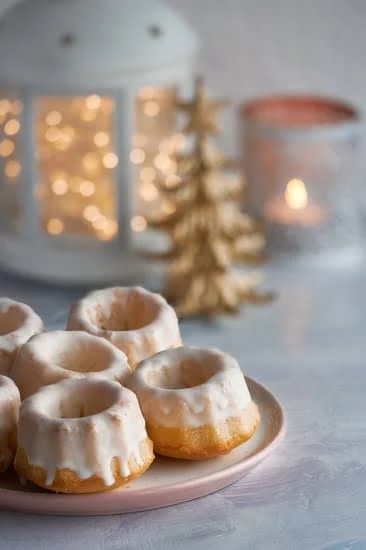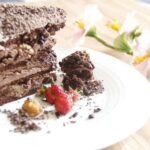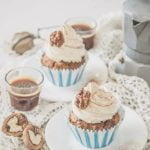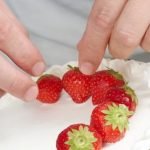Are you looking to master the art of decorating cakes with buttercream? In this article, we will guide you through the process of decorating a dummy cake with buttercream, perfect for practicing your skills and creating stunning designs. From choosing the right dummy cake to adding intricate details and embellishments, we will cover everything you need to know to elevate your cake decorating abilities.
Dummy cakes serve a crucial purpose in the world of cake decorating. These artificial cakes are typically made from styrofoam or other non-edible materials and are used for display, practice, or as a placeholder during the design process.
They provide an excellent canvas for trying out different decorating techniques without the risk of wasting real cake. With our step-by-step instructions, you’ll be able to perfect your buttercream skills on a dummy cake before moving on to the real thing.
Before diving into the decorating process, it’s important to choose the right dummy cake for your project. We’ll provide tips on selecting the appropriate size and shape of a dummy cake as well as where to purchase them and what materials you’ll need.
Additionally, we’ll walk you through preparing smooth and creamy buttercream, covering techniques for achieving the perfect consistency for decorating. With these foundational elements in place, you’ll be ready to create beautiful designs on your dummy cake.
Choosing the Right Dummy Cake
When it comes to practicing buttercream decoration, choosing the right dummy cake is essential. Dummy cakes are artificial, non-edible cake forms that mimic the look and feel of real cakes. They come in various shapes and sizes, making them ideal for honing your buttercream decorating skills without the worry of ruining an actual cake. Here are some tips on selecting the appropriate dummy cake for decorating:
- Consider the size and shape: Choose a dummy cake that matches the dimensions of the actual cake you plan to decorate in the future. This will give you a realistic canvas to practice on.
- Where to purchase: Dummy cakes can be found at specialty baking stores, online retailers, or craft shops. Alternatively, you can also make your own using foam insulation or styrofoam.
- Materials needed: Along with the dummy cake, you will need a sturdy base or cake board to place it on during decorating. You may also require additional tools such as a turntable and offset spatula for smooth application of buttercream.
By selecting the right dummy cake and gathering necessary materials, you’ll be well-prepared to begin practicing your buttercream decoration techniques. Whether you’re a beginner learning the basics or an experienced decorator experimenting with new designs, having a selection of dummy cakes in various sizes can greatly enhance your skill development.
Now that you know how important it is to choose the right dummy cake for practicing buttercream decoration, let’s move on to preparing the perfect buttercream for your designs. With these tips in mind, you’ll soon be on your way to creating stunning decorative cakes without any fear of mistakes or mishaps along the way.
Preparing the Buttercream
When it comes to decorating a dummy cake with buttercream, the type of buttercream you use plays a crucial role in achieving the desired result. A smooth and creamy buttercream is essential for creating beautiful designs, so it’s important to prepare it properly. Here’s how you can make the perfect buttercream for decorating your dummy cake:
1. Choose the right ingredients: To make a delicious and workable buttercream, be sure to use high-quality unsalted butter, confectioner’s sugar, vanilla extract, and a pinch of salt.
2. Cream the butter: Start by beating the room-temperature butter on medium speed until it becomes pale and fluffy. This step is crucial for achieving a smooth texture.
3. Add the sugar gradually: Slowly incorporate the confectioner’s sugar into the creamed butter, adding it in batches. This helps prevent lumps from forming and ensures a silky consistency.
4. Achieve the perfect consistency: If the buttercream appears too stiff, you can add a teaspoon of milk or cream at a time until it reaches the desired consistency for easy spreading and piping.
5. Flavor and color: Once your buttercream is smooth and creamy, add in any desired flavorings or food coloring to achieve your desired taste and appearance.
By following these steps, you’ll be able to prepare a delicious and workable buttercream that is perfect for decorating your dummy cake.
Remember that practicing how to decorate a dummy cake with buttercream takes time and patience, but with dedication and proper techniques, anyone can develop their skills in cake decoration using this versatile frosting. Happy decorating.
Crumb Coating the Dummy Cake
Before you can start decorating a dummy cake with buttercream, it’s essential to begin with a crumb coat. This step is crucial in achieving a smooth and flawless final finish for your design. The crumb coat acts as a base layer that seals in any loose crumbs and provides a clean canvas for your buttercream decorations.
The purpose of crumb coating is to create a smooth surface that will prevent crumbs from showing through the final layer of buttercream. Without this initial coating, the final decoration may appear uneven or have visible crumbs embedded in the design. Additionally, the crumb coat helps the subsequent layers of buttercream adhere better to the dummy cake, ensuring a more polished and professional look.
Applying Buttercream as a Crumb Coat
To crumb coat your dummy cake, start by spreading a thin layer of prepared buttercream over the entire surface using an offset spatula. Make sure to cover the entire cake evenly, including the top and sides.
The goal is not to achieve perfect smoothing at this stage but instead to create a secure base for the final layer of decorations. Once the cake is fully covered with buttercream, place it in the refrigerator for about 15-20 minutes to allow the layer to set before applying additional decorations.
If you encounter air bubbles or rough patches while applying the crumb coat, use a bench scraper or smoother tool to gently scrape away any imperfections. For best results, work in small sections by spreading and smoothing small amounts of buttercream at a time.
It’s also important to ensure that any exposed foam on the dummy cake is fully covered by the crumb coat. Taking your time during this step will ultimately result in a beautifully decorated dummy cake with buttercream.
Now that your dummy cake is crumb coated and ready for decoration, you can move on to adding intricate designs and details using various piping techniques and embellishments. Mastering this initial step will set the foundation for creating stunning buttercream decorations on your practice cakes.
Decorating Techniques
When it comes to decorating a dummy cake with buttercream, there are various techniques that can be used to achieve professional-looking designs. One of the most popular methods is piping, which involves using a piping bag and different tips to create patterns, flowers, and other decorative elements on the cake.
Another technique is creating rosettes, which can add a beautiful and elegant touch to the cake. Textured effects are also commonly used to give the cake a unique and visually appealing finish.
To start decorating a dummy cake with buttercream, it’s important to have the right tools and materials on hand. This includes piping bags, various piping tips, offset spatulas for smoothing the buttercream, and any edible decorations you plan to use. It’s also essential to have a well-prepared batch of buttercream that is at the right consistency for decorating.
In addition to using different techniques for applying buttercream, it’s important to consider color choices and how they can enhance the overall design of the dummy cake. Incorporating different colors and textures can add depth and visual interest to the cake. By experimenting with different techniques and color combinations, decorators can develop their skills and create stunning designs on dummy cakes.
| Technique | Description |
|---|---|
| Piping | Using a piping bag and tips to create patterns and designs on the cake |
| Rosettes | Creating floral designs with buttercream for an elegant finish |
| Textured Effects | Adding visual interest to the cake with different textured finishes using buttercream |
Adding Details and Embellishments
Decorating a dummy cake with buttercream allows for endless creativity and the opportunity to practice various techniques without the pressure of a real cake. Once the crumb coat is applied, it’s time to take your design to the next level by adding details and embellishments. From intricate piping designs to delicate edible decorations, this step is where you can truly showcase your artistry.
One popular way to add detail to a dummy cake with buttercream is through piping. Using different piping tips, you can create beautiful designs such as lace patterns, floral motifs, or even personalized messages. It’s important to practice with different tips and find the right pressure to achieve clean lines and shapes. You can also experiment with creating rosettes and other textured effects using buttercream.
In addition to piping, consider incorporating edible decorations such as fondant or gum paste flowers, edible pearls, or chocolate accents. These elements can add a layer of depth and sophistication to your design. When adding embellishments, be mindful of color coordination and placement to ensure a harmonious overall look. Whether you opt for simplicity or extravagance, adding details and embellishments is where your creativity can truly shine.
As you decorate your dummy cake with buttercream, keep in mind that practicing different techniques will help improve your skills over time. Don’t be afraid to experiment and push the boundaries of your creativity-the more you practice, the better you’ll become at creating professional-looking designs. With patience and perseverance, decorating a dummy cake with buttercream can be an enjoyable and rewarding experience for both beginners and experienced decorators alike.
Troubleshooting and Tips
Common Buttercream Decorating Issues
When decorating a dummy cake with buttercream, it’s common to encounter certain issues that can affect the overall finish of the design. One common problem is air bubbles in the buttercream, which can create an uneven texture on the cake.
Another issue that may arise is the buttercream becoming too soft or too stiff, making it difficult to achieve smooth and clean lines. It’s important to address these issues as they arise in order to maintain a professional-looking result.
Fixes for Common Issues
To remedy air bubbles in the buttercream, gently tap the sides of the cake while smoothing out the frosting to release any trapped air. If the buttercream is too soft, try chilling it for a few minutes before continuing with the decorating process.
On the other hand, if the buttercream is too stiff, add a small amount of milk or cream to soften it to the desired consistency. Additionally, using a hot spatula can help smooth out any imperfections in the buttercream and create a flawless finish.
Additional Tips for Successful Buttercream Decoration
In addition to troubleshooting common issues, there are several tips that can help ensure a successful outcome when decorating a dummy cake with buttercream. It’s important to work quickly and efficiently when handling buttercream, as it can become difficult to manipulate as it sets.
Using high-quality piping tips and tools can also make a significant difference in achieving clean lines and intricate designs. Finally, practice patience and precision when executing various decorating techniques, as this will ultimately contribute to an impressive final result.
By following these troubleshooting tips and additional advice for successful buttercream decoration, decorators can overcome potential challenges and create stunning designs on their dummy cakes.
Display and Storage
When it comes to displaying and storing a dummy cake decorated with buttercream, there are a few important factors to consider. Whether the dummy cake is for a display, photoshoot, or practice purposes, how it is presented and preserved can make a significant difference in the longevity of the design.
For displaying the decorated dummy cake, it’s essential to choose an appropriate stand or base that complements the design. Consider using a cake stand or pedestal to elevate the dummy cake and showcase its details. Additionally, ensure that the area where the cake will be displayed is clean and free from any potential sources of damage, such as direct sunlight or moisture.
When it comes to storing the decorated dummy cake, it’s important to handle it with care to preserve the buttercream design. If possible, store the cake in a cool, dry place away from direct sunlight and high humidity. Placing the cake in a display case or under a protective cover can help prevent dust accumulation and maintain its appearance over time.
To prolong the life of the buttercream decoration on the dummy cake, consider wrapping it with food-safe plastic wrap or placing it in a clear acrylic box for added protection. With proper care and storage, a beautifully decorated dummy cake can continue to serve as an inspiration for future projects or as part of a stunning display for an extended period.
By paying attention to how you display and store your decorated dummy cakes with buttercream, you can ensure that your hard work is preserved and appreciated long after it has been created.
Conclusion
In conclusion, decorating a dummy cake with buttercream can be a fun and rewarding experience for both beginner and experienced bakers. Throughout this article, we have discussed the importance of using dummy cakes for practicing buttercream decoration, as well as provided step-by-step guidance on choosing the right dummy cake, preparing the buttercream, crumb coating, decorating techniques, adding details and embellishments, troubleshooting and tips, and finally displaying and storing the finished product.
By following the tips and techniques outlined in this article on how to decorate a dummy cake with buttercream, individuals can hone their skills and create professional-looking designs. It is important to remember that practice makes perfect, and experimenting with different decorating techniques is key to improving one’s abilities in cake decoration.
Ultimately, whether it is for personal enjoyment or for professional development, mastering the art of decorating a dummy cake with buttercream can open up a world of creative possibilities. With dedication and patience, anyone can learn to create stunning designs that will impress friends, family, or clients at special occasions. So go ahead, give it a try, and let your creativity shine through your beautifully decorated dummy cakes.
Frequently Asked Questions
Can You Put Buttercream on a Dummy Cake?
Yes, you can put buttercream on a dummy cake. Using buttercream allows you to practice your cake decorating skills, such as smoothing and piping, without the need for a real cake.
How Do You Stick Icing to a Dummy Cake?
There are a few methods for sticking icing to a dummy cake. One common method is to use royal icing as an adhesive. Another option is to lightly mist the dummy cake with water before applying fondant or buttercream.
What Is the Best Frosting for a Dummy Cake?
The best frosting for a dummy cake is often royal icing or ganache. These frostings provide a smooth surface for decorating and can easily be smoothed and sculpted to create different effects. Ultimately, the best frosting will depend on the specific techniques you plan to practice on the dummy cake.

Welcome to our cake decorating blog! My name is Destiny Flores, and I am the proud owner of a cake decorating business named Cake Karma. Our mission is to provide delicious, beautiful cakes for all occasions. We specialize in creating custom cakes that are tailored specifically to each customer’s individual needs and tastes.





